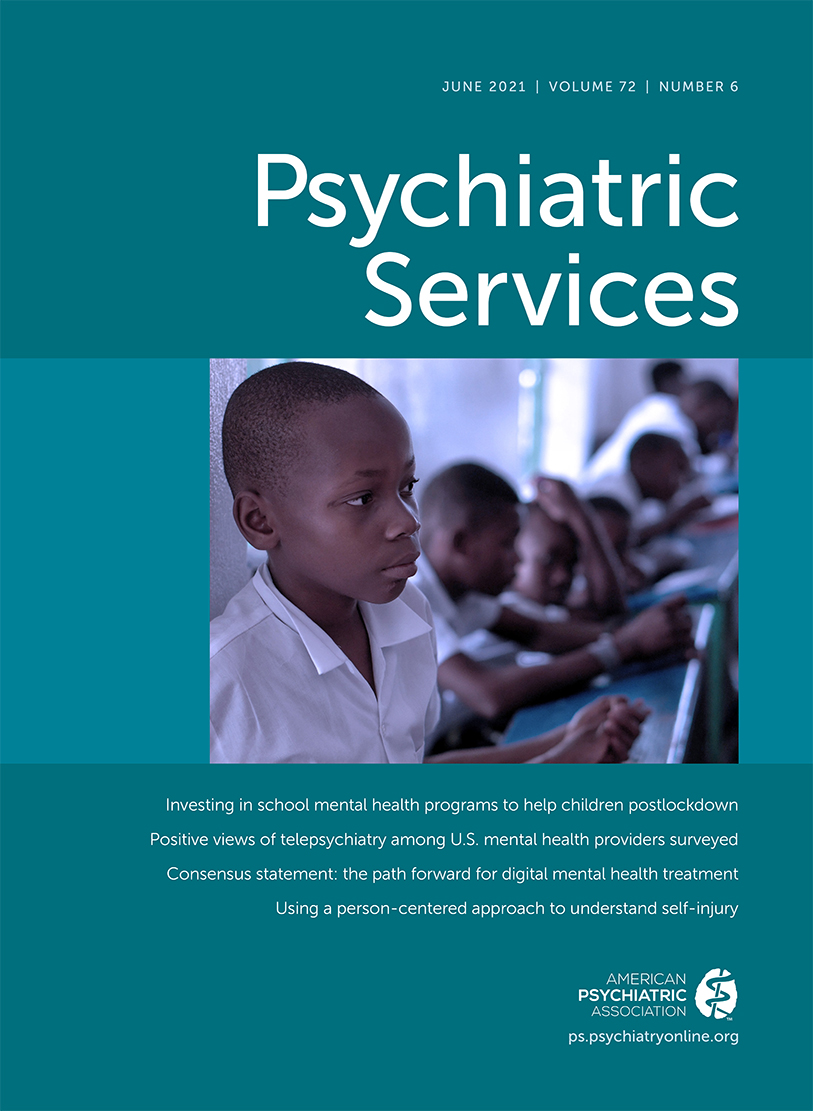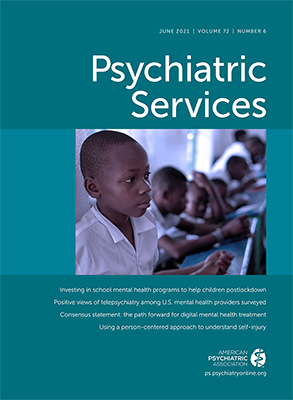Although children have been mostly spared from becoming COVID-19 fatalities (
1), they are likely to struggle with many of the mental health consequences of this pandemic. Periods of prolonged exposure to toxic stress and of being deprived of nutrition, social stimulation, and health care may have significant implications for children’s mental health and overall well-being (
2). As of April 25, 2020, approximately 1.5 billion children (an estimated 90% of the world’s student population) (
3) had been physically locked out of school as part of widely implemented lockdown measures. Although such closures are important from a public health perspective, closure of day care centers and schools, and wider movement restrictions, have limited opportunities for children to interact and access learning opportunities in a safe and structured environment. Girls, in particular, are at greater risk for not returning to school, particularly in rural areas in low- and middle-income countries (
4). Younger children, especially those with developmental disabilities, are at higher risk for falling behind academically and are less likely to benefit from remote learning. All these factors may negatively affect children’s academic attainment and mental and physical well-being for months or years after the restrictions are lifted.
Children restricted to their homes may benefit from increased interactions with parents and siblings, but they may also experience elevated emotional distress (
5,
6) and are at heightened risk for witnessing or experiencing domestic violence and emotional, physical, and sexual abuse. Being confined to the home increases the risk for disruption to sleep and wake cycles and physical exercise routines and promotes inappropriate technology use. Additionally, family financial stressors and unemployment are challenges with both short- and long-term consequences for children’s general physical and mental health (
7,
8). A study (
9) conducted with Italian and Spanish parents during the COVID-19 pandemic indicated that 85.7% of the parents noticed changes in their children’s emotional states and behaviors during home confinement. The most frequent symptoms reported were difficulty concentrating (77%), irritability (39%), restlessness (39%), nervousness (38%), and feelings of loneliness (31%). Families that lose income and those that depend on school meals are at risk for acute hunger and malnutrition.
Without deliberate global actions now, a whole generation of children may not realize their full potential. Although remote learning, for those with access to it, may provide children with some of their educational needs, it does not provide the necessary social and emotional support essential to children’s socioemotional development and may worsen the inequity of access to education and other social services (
10). Hence, it is important to deploy effective measures that control the pandemic and help to reopen schools safely (
4). As schools reopen, they will offer an important setting in which to support children in reestablishing routines and to support the networks essential for children to thrive socially, emotionally, and educationally. School mental health programs (SMHPs) that incorporate universal mental health approaches will be important because all children are somehow affected by the COVID-19 pandemic. Targeted approaches will remain necessary for those more severely affected. These interventions are important not only for students’ mental health and emotional needs but also for their educational attainment (
11).
The SMHP of the World Health Organization Eastern Mediterranean Regional Office (WHO-EMRO), informed by developmental, behavioral, social, and cognitive theories, focuses on mental illness prevention and mental health promotion. This program fosters a positive culture of well-being in schools, alongside early identification and referral for more intensive mental health support and tiered interventions that can be applied by teachers within a classroom setting. In 2016, the School Mental Health Implementation Network in the Eastern Mediterranean Region (SHINE;
https://learnwithshine.org) was formed with the aim of scaling up the SMHP in the region by enhancing collaboration among practitioners, researchers, and policy makers. The network includes partners from academia, nongovernmental organizations, policy makers, and implementation scientists from eastern Mediterranean region countries, with support from international universities.
Even before the COVID-19 pandemic, the SHINE network, supported by the U.S. National Institute of Mental Health and WHO-EMRO, began implementing task-shifting programs, including training and supervising teachers to take leading roles in supporting the mental health of their students through universal and targeted mental health interventions in Egypt, Pakistan, Iran, Jordan, and the United Arab Emirates. In this column, we provide a roadmap for extending the SHINE initiative through public and private investments to address the mental health consequences of the COVID-19 pandemic among children globally.
School-Based Mental Health Interventions and COVID-19
Existing mental health systems worldwide are unable to meet current needs (
12,
13) and will be unable to cope with increased demands for mental health care resulting from the pandemic. Hence, we believe that the large-scale implementation of universal and targeted school mental health interventions should be prioritized to minimize the burden on health care systems. SMHPs should also address the mental health of teachers, who are also affected by the pandemic. In low- and middle-income countries, technology is playing an increasingly important role in providing access to mental health training as well as in health care delivery (
14). Schools are one environment where Internet access is quickly becoming a necessity in these countries. By taking advantage of the Internet, programs that integrate online teacher training and support have not only the potential for dissemination at scale but also the ability to be accessible during lockdown. As a result, teacher training is uninterrupted, and the teachers are equipped to meet the mental health needs of students from day 1 of their return to in-person teaching (see Pakistan case study below). Such online portals are highly adaptable and can facilitate delivery of tailored modules to students that may be required when schools reopen with physical distancing requirements. Previous work from our group (by A.R. [
15]) has shown that a school-based mental health intervention in a rural setting in Pakistan could raise mental health awareness not only among the schoolchildren but also among their parents, neighbors, and children not attending school. In the context of COVID-19, schoolchildren could therefore serve a vital function when information has to be disseminated rapidly and effectively in the community.
Adaptability of SMHP: The Pakistan Experience
In Pakistan, the WHO SMHP training has been adapted to an online teacher training platform including the use of a chatbot to aid the implementation of intervention strategies in classroom settings (
16,
17). By using the online platform, teachers have been trained in implementing universal and targeted intervention strategies in a rural subdistrict of Rawalpindi, Pakistan. With this program, teachers used a chatbot to identify the socioemotional and behavioral problems of children in order to support appropriate strategies for managing these problems in everyday classroom settings (targeted intervention strategies) and to promote mental health among all school children (universal components of the SMHP).
After COVID-19 broke out, online consultations with parents and teachers were conducted to understand the pandemic’s impact on the mental health and psychosocial well-being of both children and teachers. Parents and teachers expressed concern that children might be at higher risk for experiencing mental health problems and might have new underlying causes for their behaviors, which teachers would need to be aware of when school resumed. Teachers may also experience stress from the epidemic, and this stress may affect their ability to carry out their educational and SMHP activities.
The online training system and chatbot have the potential to more readily disseminate COVID-19–specific knowledge and support to teachers in public schools. The online version of SMHP ensures program integrity and quality and can be adapted in response to diverse psychosocial needs of the target population. Because not all students, parents, and teachers have the technologies and finances to access online resources, the school curriculum has been made available on television in Pakistan. Potentially, this platform can also be used for delivering universal school mental health content.
To successfully scale up, school mental health initiatives will require dedicated cross-sectoral implementation teams (including the health and education sectors), sustained policy advocacy and stakeholder’ engagement, and effective coordination among education and health systems, especially at the local level (
18). We therefore call for the rapid establishment of cross-sectoral coordination mechanisms and financial and resource investment in establishing the platforms necessary to ensure appropriate and timely support to address the mental health impacts of the COVID-19 pandemic on children and adolescents. We propose increased investment in human and technological resources to support appropriate training of teachers and the provision of the SMHP and that health and education administrators work with parents and children in redesigning school curriculums and the school environment to accommodate SMHP services. We also recommend that service providers and researchers explore the cost-effectiveness and efficiency of delivering SMHP and other child mental health services at scale in diverse global settings.
Conclusions
Acting now to prepare for the reopening of societies and schools across the globe is critical to children’s mental health. Failure to do so could lead to poor mental health outcomes for the next generation that could precipitate long-term social and economic consequences.

